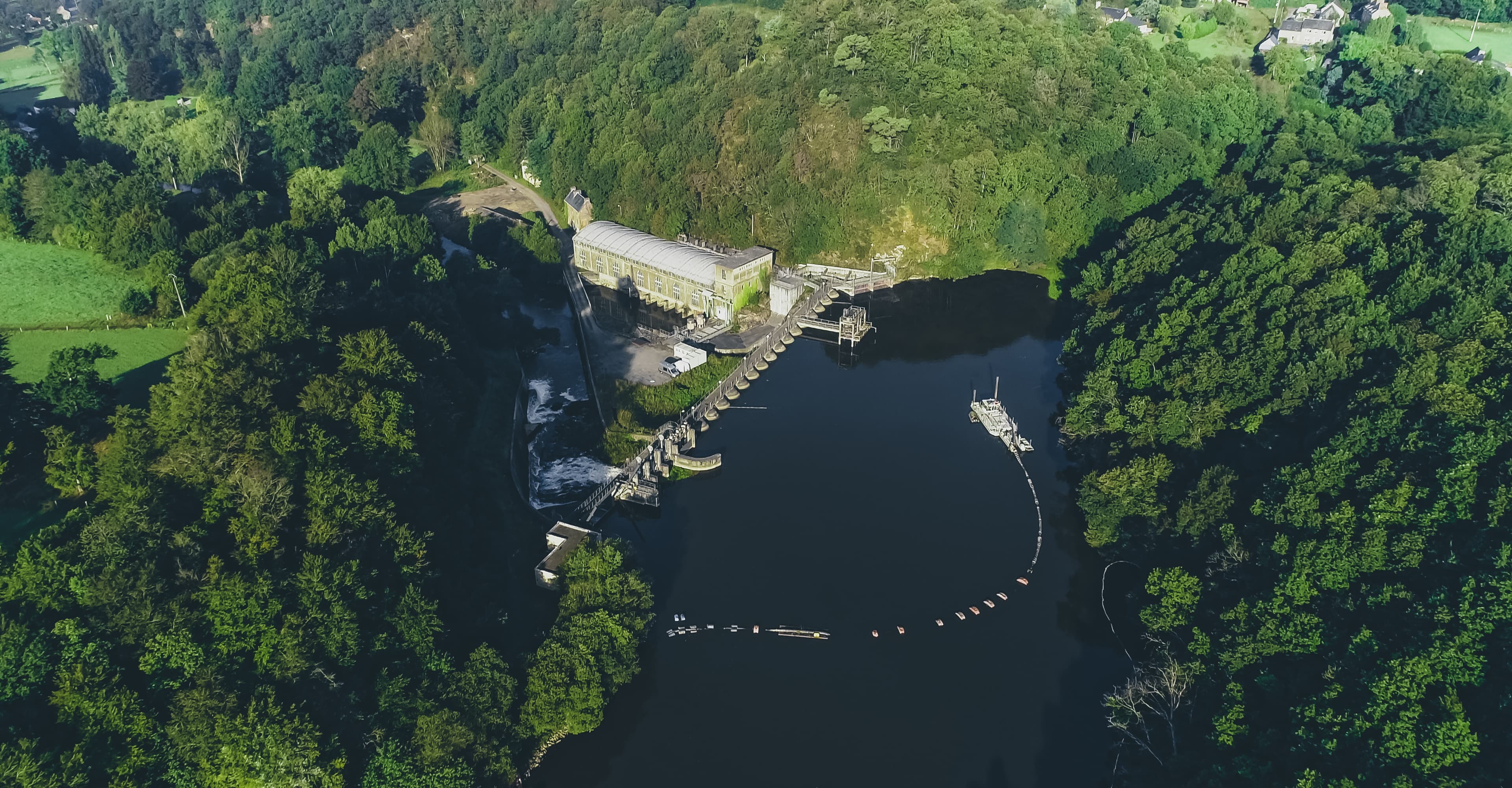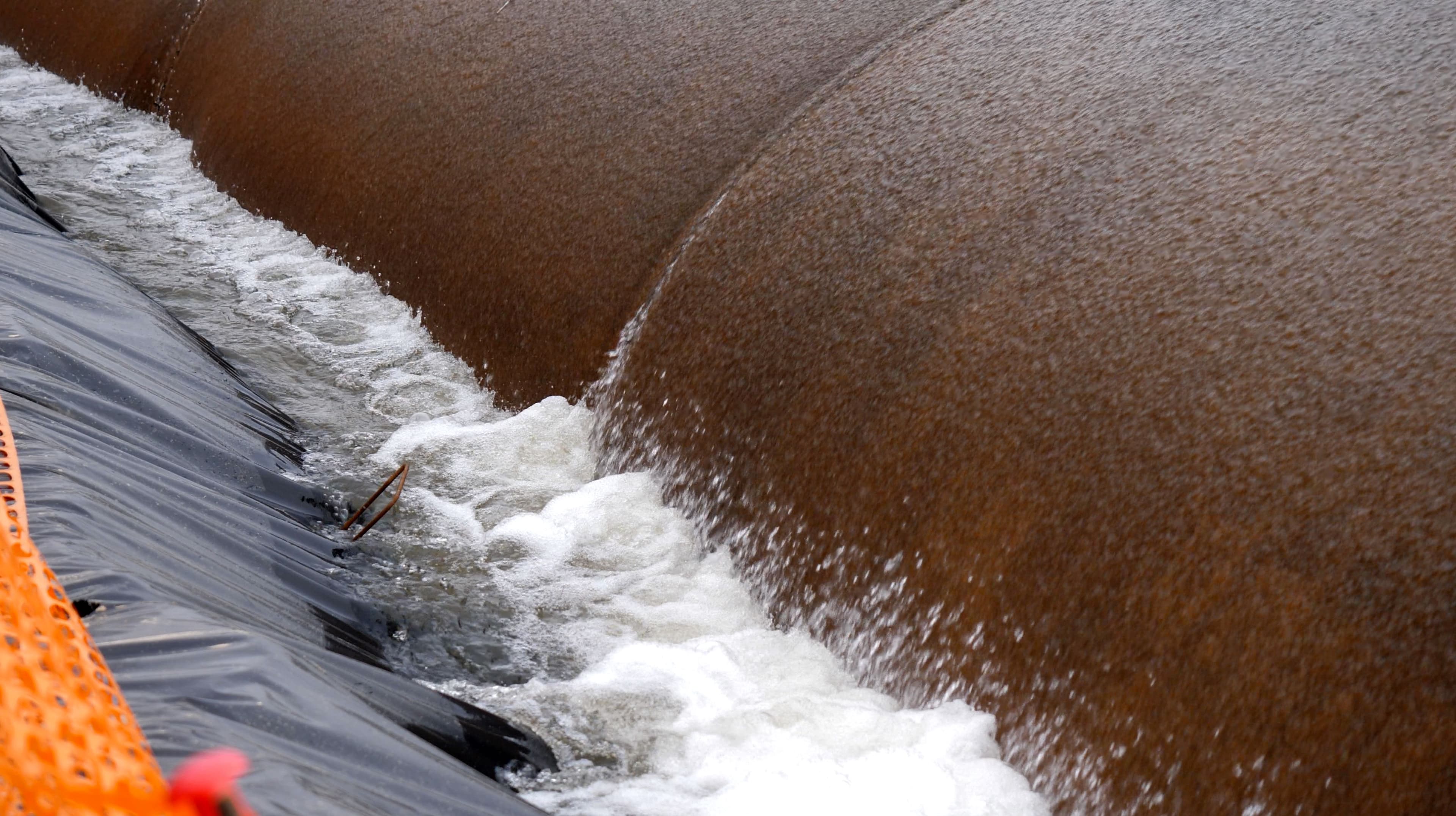
How GEOTUBE dewatering technology helped to restore a river’s ecology
Hydroelectric energy is an important source of renewable energy that produces large and versatile electricity output with minimum greenhouse-gas emissions. A hydroelectric reservoir generates electricity by making use of water collected behind a hydroelectric dam. Once in place, the dam opportunities for leisure and tourism.
These reservoirs can have a substantial impact on the local landscape and economy, and their creation may sacrifice farmland and surrounding ecosystems. The natural ecology including flora and fauna be disrupted. Commonly, older dams block the natural flow of sediment downstream and prevent migrating fish from ascending or descending the watercourse to complete their life cycle. For fish populations whose reproduction depends on access to spawning areas in upstream rivers, dams present an insurmountable obstacle. The removal of outdated hydroelectric dams becomes an option if their economic value is low, and the removal will benefit the environment. One challenge of removal is how to economically deal with the massive volume of mud that has accumulated in front of the dam in a sustainable way.
The coastal river La Sélune in Normandy, France flows into the bay of Mont-Saint-Michel. The Vezins and Roche-Qui-Boit are aged hydroelectric dams on La Sélune. Both dams block fish migration, degrade water quality, and trap sediment, together altering 25 km of river habitat.
The EU Water Framework Directive and the French Grenelle Environment Forum decided to restore the area. The decision was made to remove the two dams to restore the hydrological and biological function of the river, including improving water quality and sediment movement and restoring Atlantic salmon and other important migratory fish to the river.
The first dam at Vezins was demolished in 2019, causing sediments to accumulate in front of the second smaller dam at the Roche-Qui-Boit. The sediment could potentially end up in the in the bay of Mont Saint Michel. Mont Saint Michel is a tidal island that is home to the Benedictine Abbey, built between the 11th and 16th centuries. It was added to the UNESCO list of World Heritage Sites in 1979, and is visited by more than 3 million people each year.
The island is located a few hundred meters from mainland and for centuries was only accessible at low tide. In 2014 a causeway and pedestrian footbridge were built to permanently connect the rock to the mainland. These works were part of a series of measures to protect the tidal landscape. In this light, prior to the demolition of the last dam on the Sélune river, additional measures were needed to prevent sediment accumulation further downstream and in the bay.
Engineers considered moving the dredged material to an offsite location. This would require approximately 140,000 m³ (4,9 million ft3) of mud being dredged for several kilometres upstream from the Roche-Qui-Boit dam to be transported over the sparse country roads and through the local villages. This transport would not only be expensive and increase the carbon footprint of the project, but also greatly impact the local community. Alternatively, a Dutch dredging company proposed dewatering and consolidating the sediment alongside the reconstituted river on the former Vezins’ reservoir bed.
Our team partnered with the contractor to design seven medium size dewatering platforms, test the dewaterability of the sediments, and assess the need for flocculant. Using an environmental 40.6 cm (16 in) cutter suction dredger the sludge was pumped up from the bottom of the basin directly into the tubes that were rolled out on these platforms.
The custom GEOTUBE dewatering containers had multiple EyePort fill funnels, which allowed filling to reach a capacity of over 30 m³ (1060 ft3) per linear meter before stacking. An environmentally friendly flocculant was added inline. The specially selected GEOTUBE GT500D fabric took care of instantaneous and continuous dewatering and high-quality filtration. The effluent water was regularly checked for turbidity before it flowed directly back into the river. The dewatered mass could then be scooped out of the tubes using excavators. The volume reduction caused by the dewatering saved thousands of truck movements to get the material off site.
After the dewatering platforms were dismantled and the hydraulic pipelines and the dredge were safely stored, nature took over again. The demolition of the last dam leads to an increase of biodiversity as spawning areas become accessible again. Meanwhile only kilometres further downstream, the tides alternate as the abbey of the Mont Saint Michel silently dominates the bay.
In addition to sediment removal during the deconstruction of obsolete dams, GEOTUBE dewatering is also used at operational dams. When a river is stilled behind a dam, sediments accumulate upstream at the bottom of the reservoir. Less water can be stored causing mayor and costly production loss. The Sélune project shows that the flexibility of GEOTUBE dewatering can present a solution for sediment removal which considers the social, economic, and ecological aspects.

Explore more blogs
View allDo geosynthetic clay liners require prehydration?
How geosynthetics enhance agricultural productivity in arid regions
How GEOTUBE dewatering technology helped to restore a river’s ecology
The demolition of dams on La Sélune River in Normandy, France, and the use GEOTUBE dewatering containers restored ecology and biodiversity in the river.